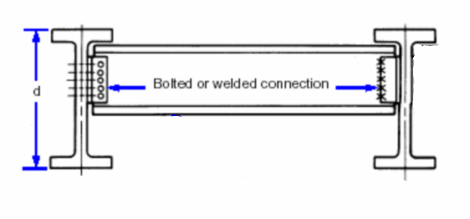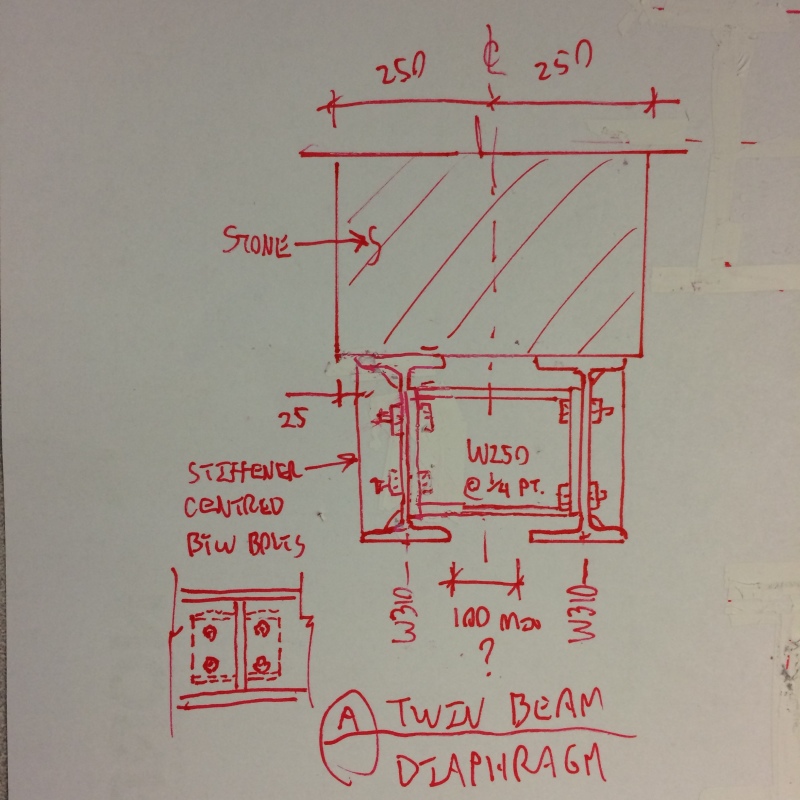Hi there,
I'm based in uk and have done some calculations to size beams to replace a load bearing stone wall
Wall thickness is 530mm so approx 500mm stone/mortar wall excluding render.
I have sized 2 off 203x203x 46 uc beams. This only comes to 406mm total width.
I'm not sure whether I should specify 250mm wide top plates for each beam (totalling 500mm) to ensure full contact between wall and beams. Or whether the 100mm overhang (spread over 33mm either side of each beam) is acceptable. I can find no guidance in specifications for this.
Would I be able to use a top plate if I could get away with 2 times smaller 153uc beams, as these would be much narrower.....
Any thoughts? apologies if this is a simple one, but I cant find the solution in any of my books or online.
Thanks in advance.
I'm based in uk and have done some calculations to size beams to replace a load bearing stone wall
Wall thickness is 530mm so approx 500mm stone/mortar wall excluding render.
I have sized 2 off 203x203x 46 uc beams. This only comes to 406mm total width.
I'm not sure whether I should specify 250mm wide top plates for each beam (totalling 500mm) to ensure full contact between wall and beams. Or whether the 100mm overhang (spread over 33mm either side of each beam) is acceptable. I can find no guidance in specifications for this.
Would I be able to use a top plate if I could get away with 2 times smaller 153uc beams, as these would be much narrower.....
Any thoughts? apologies if this is a simple one, but I cant find the solution in any of my books or online.
Thanks in advance.

![[idea] [idea] [idea]](/data/assets/smilies/idea.gif)
![[r2d2] [r2d2] [r2d2]](/data/assets/smilies/r2d2.gif)

